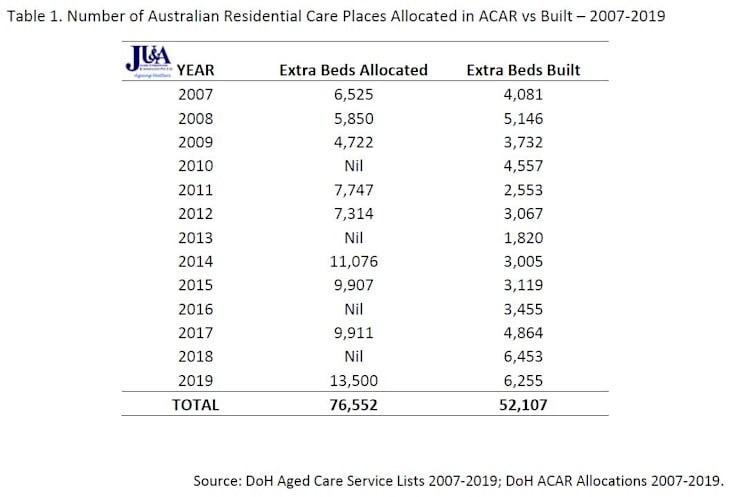Australia has fallen short on building the number of beds allocated under the Aged Care Approvals Round (ACAR) every year since 2007 – despite meeting new records for the number of beds built in the past two years.
Check out the graph above supplied to us by James Underwood.
As you can see, there have been more than 76,000 extra aged care places allocated in the last 13 years – but just over 52,000 beds built.
Despite record highs of 6,453 beds in 2018 and 6,255 in 2019 (around $1.6 billion a year at $250,000 a bed), those two years combined is still fewer than the 13,500 places allocated in 2019.
James says we can’t expect to see the fallout from COVID-19 strike the development of new beds for some time, noting that when the GFC happened in 2008, providers had to complete projects that were already underway.
The slump only hit in 2011 – with the number of new beds being built dropping by almost half from 4,557 the previous year to 2,553.
So, the numbers of new beds being built is likely to slump again by the end of 2021.
However, the Government still has a set target of 78 residential places per 1,000 people over the age of 70 by 2021-22 – a target is unlikely to meet.
“Growth is one way and that’s up,” James says.
However, he says those operators that have an occupancy of 96% will be unlikely to sustain this into the future, labelling it an “artificial situation”.
James uses the example of hospitals, childcare centres and even restaurants.
“They don’t require 96% occupancy,” he said. “That’s not how the real world works.”
Instead, he predicts demand for a better mix of smaller and larger homes to provide people with more choice and an increase in the number of brownfields developments as providers expand existing developments rather than build new homes
“It’s one of the most cost-effective forms of development,” he argued, citing the success of some larger operators in brownfields developments.
James adds that despite recent drop-offs in occupancy during COVID-19 – see this story on Estia – the low number of cases in Australian aged care homes could reflect positively on providers in the long-run.
“Had there been a greater spread of COVID in the community, people at home would have been far less safe.”










